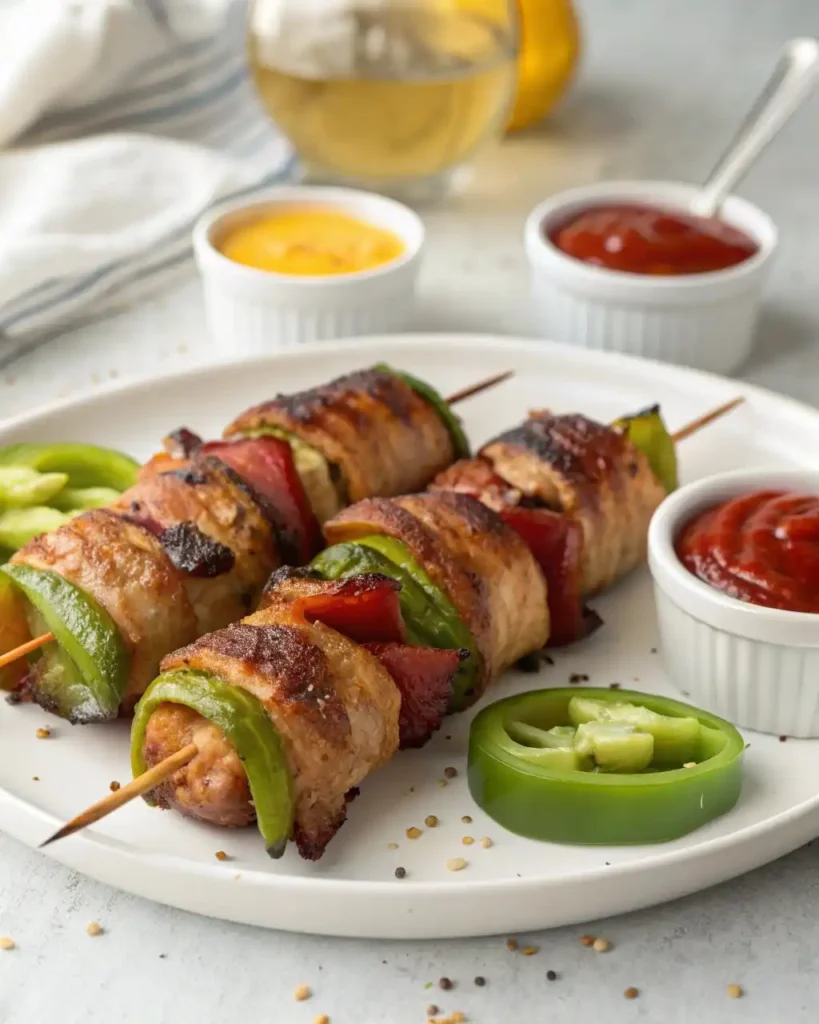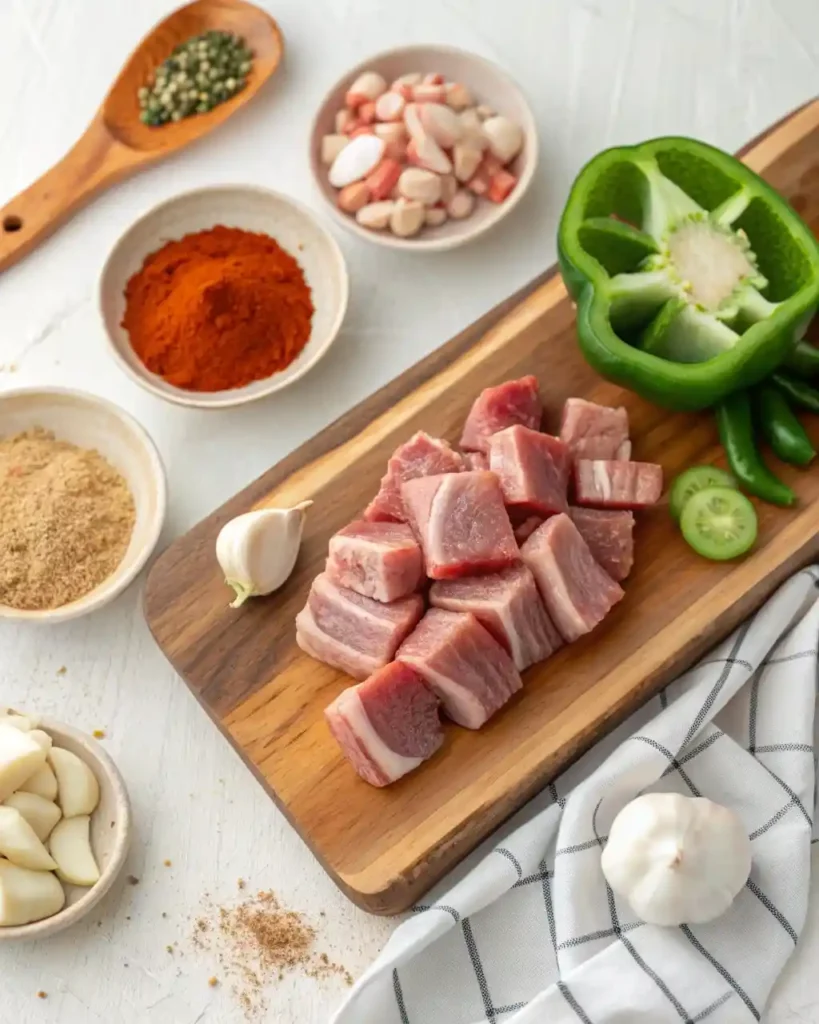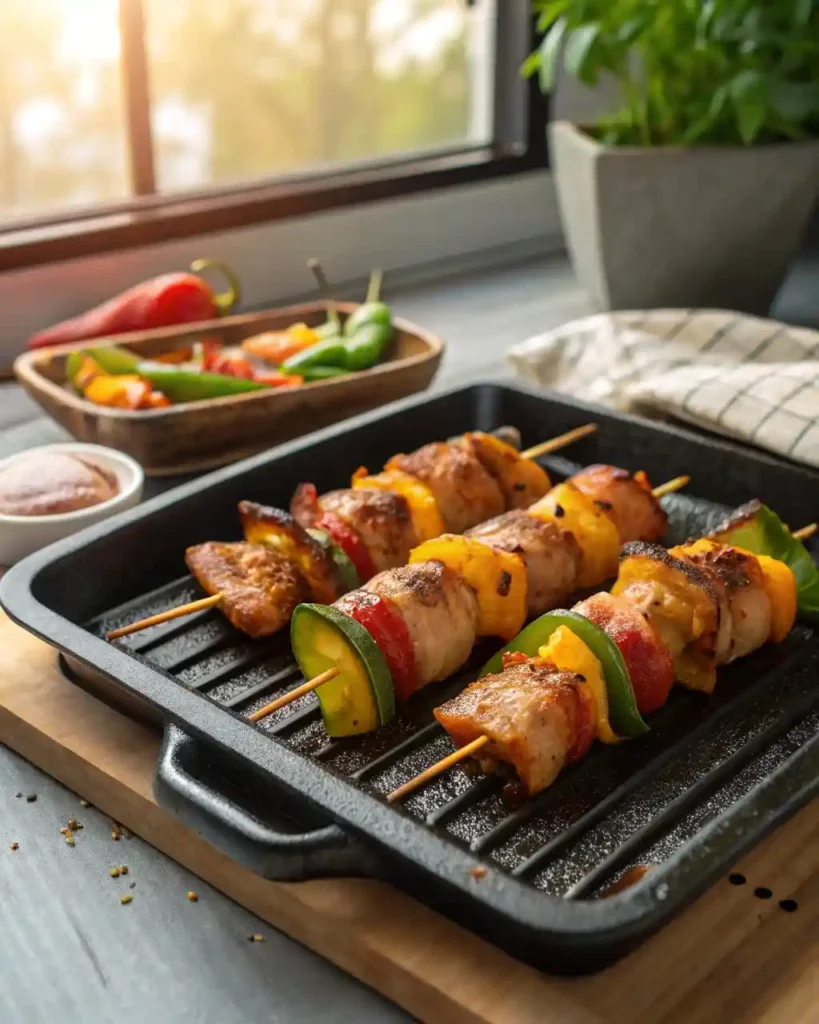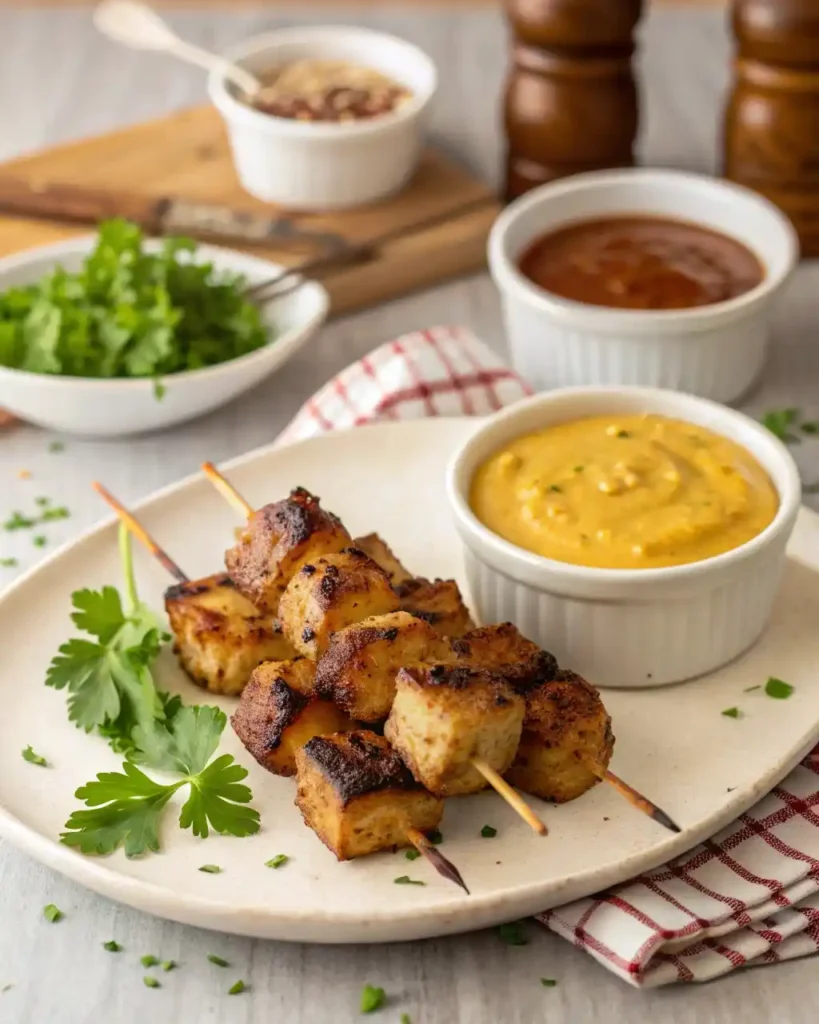
WW2 Wrapped Gator Bites Recipe isn’t just about flavor—it’s about history on a plate. These smoky, bacon-wrapped bites tell a story of resilience from a time when kitchens ran on creativity, not convenience. Born out of wartime necessity, this recipe blends bold taste with simple, resourceful ingredients. Whether you enjoy wild game or treasure meals with deep roots, this is one recipe that deserves to be remembered—not forgotten.
Table of Contents
Table of Contents
Biting into Southern History with WW2 Wrapped Gator Bites
How Grandma’s Recipe Survived the War
I still remember standing in my grandmother’s kitchen, watching her pan-fry something I couldn’t quite identify. It didn’t smell like chicken—but it smelled good. “It’s gator,” she said with a grin. “Wrapped like we did it during the war—nothing wasted, everything tasty.”
Back in the World War II era, food rationing changed the way Americans cooked. Meats were limited. Fat was precious. But in Southern swamplands, resourceful families turned to local game like rabbit, squirrel, and yes—alligator. Those lucky enough to trap one didn’t let a single bite go to waste. WW2 Wrapped Gator Bites came from that exact mindset—bite-sized tail meat chunks, seasoned and pan-fried with whatever you had. When bacon was available, it became the wrap of choice for flavor and fat.
This story-rich recipe fits right in alongside other heritage meals like this Popeyes gravy recipe—the kind passed down in cast iron, not cookbooks.
The Alligator Appetizer That Won’t Be Forgotten
Why gator? Because it was there. In Florida and Louisiana, gator tail was an abundant source of protein, especially during war years. The meat is lean but surprisingly tender when cooked right, and its subtle taste made it ideal for soaking up the flavors of smoke, salt, and spice. Over time, cooks began wrapping those chunks in bacon or salt pork to add fat and keep them moist while cooking.
Modern versions of this dish celebrate the same simple values: use what you’ve got, keep it flavorful, and share it with good company. Recipes like Air Fryer Buffalo Wings carry that same spirit—unfussy and made to gather around.
What makes this dish truly special is that it could’ve easily been forgotten. But every time we cook it, we honor the ones who didn’t let hard times stop them from feeding their families well.
From Swamp to Skillet – The Making of a True WW2 Wrapped Gator Bites Recipe
What Cut Works Best for This WW2 Wrapped Gator Bites Recipe?
When it comes to making a true WW2 Wrapped Gator Bites Recipe, not just any cut will do. The best choice is alligator tail meat—it’s the most tender, lean, and easy to work with. That’s exactly what home cooks would’ve used during the 1940s when families had to stretch every ounce of protein they could get. The tail offers the perfect balance between chew and tenderness, making it ideal for wrapping in bacon and skewering with toothpicks.
If you can’t find tail meat, tenderloin or jaw meat are good substitutes. Just avoid cuts from the legs—they’re tougher and take much longer to break down.
Today, you can source gator meat from local butchers in the South or order it online through exotic meat suppliers. This step keeps your WW2 Wrapped Gator Bites Recipe close to its roots while adding just a touch of modern convenience.
One great modern pairing idea? Serve your bites alongside something crispy like Zucchini Fries in Air Fryer—easy, crunchy, and keeps the Southern theme alive.
How to Prep and Marinate Gator for the Best WW2 Wrapped Gator Bites Recipe
Now let’s talk prep—because a great WW2 Wrapped Gator Bites Recipe depends on how you treat the meat before it hits the heat. Alligator meat, though mild, can be a little firm if not properly marinated.
The trick is to soak it in buttermilk or white vinegar for about 2 hours. This not only tenderizes the meat but also removes any lingering swampy taste. After that, a simple Cajun or creole spice blend will add depth without overpowering the dish.
Here’s a quick marinade ratio for 1 pound of gator meat:
- 1 cup buttermilk (or white vinegar)
- 2 tablespoons Cajun seasoning
- 1 teaspoon garlic powder
- 1 teaspoon smoked paprika
Once marinated, drain the excess liquid and pat the meat dry. This helps the bacon crisp up when cooked and lets the flavors stay concentrated. Remember, we’re building flavor like they did during wartime—carefully, with intention.
Modern recipes like Air Fryer Filet Mignon also rely on proper marination and prep to turn lean cuts into something crave-worthy. The same principle applies here. Take the time, and your WW2 Wrapped Gator Bites Recipe will deliver on every bite.
The Recipe – How to Make WW2 Wrapped Gator Bites Recipe
Ingredients You’ll Need for This WW2 Wrapped Gator Bites Recipe

The charm of this WW2 Wrapped Gator Bites Recipe is in its simplicity. Wartime cooking didn’t rely on fancy ingredients, and this version stays true to that tradition—with a little added flavor from the modern pantry. Everything here is easy to find, or you likely already have it on hand.
Here’s what you need:
- 1 pound alligator tail meat, cut into bite-sized chunks
- 12–14 strips of thick-cut bacon (halved)
- 1 cup buttermilk or white vinegar (for marinating)
- 2 tablespoons Cajun seasoning
- 1 teaspoon garlic powder
- 1 teaspoon smoked paprika
- Toothpicks for securing the wraps
- Optional: Mustard glaze or BBQ dipping sauce for serving
If you’re unable to get alligator meat, chicken thighs make an acceptable substitute. But to truly capture the spirit of the WW2 Wrapped Gator Bites Recipe, the gator is where the flavor meets the story.
For a quick idea on how to build a well-balanced plate, pair your bites with something comforting like Walleye Fish Tacos or enjoy them with something hearty like Baked Boneless Chicken Thighs.
Cooking Method: Skillet, Grill, or Air Fryer?

Once you’ve marinated and seasoned the gator meat, it’s time to wrap and cook. This WW2 Wrapped Gator Bites Recipe works with whatever cooking tool you’ve got. Here’s how to handle each method:
1. Skillet (Classic):
This is the traditional method your grandmother might’ve used. Heat a cast iron skillet over medium-high heat and place the wrapped gator bites seam-side down. Cook for 4–5 minutes per side, turning to crisp all edges. Drain on paper towels.
2. Air Fryer (Crispy & Fast):
Preheat your air fryer to 375°F. Place wrapped gator bites in a single layer and cook for 12–14 minutes, flipping halfway through. This is the most convenient method with very little oil required.
3. Grill (Smoky & Bold):
Preheat your grill to medium heat. Place bites on skewers and grill over indirect heat for about 15 minutes, turning occasionally. This method adds a beautiful charred flavor that complements the bacon.
Safety Tip:
No matter how you cook it, make sure the internal temperature of the gator reaches 160°F to ensure it’s safe to eat.
This WW2 Wrapped Gator Bites Recipe doesn’t need much help to be delicious—but if you’re feeling adventurous, try brushing the bites with a bit of mustard glaze in the final two minutes of cooking. It adds just the right zing.
FAQ
What are WW2 Wrapped Gator Bites?
WW2 Wrapped Gator Bites are small pieces of alligator tail meat wrapped in bacon and cooked until golden and crisp. Inspired by the resourceful cooking methods of World War II, they’re a blend of necessity and flavor. This dish draws from Southern roots, where wild game was a common solution during meat shortages. The result is a bite-sized snack that tastes like history with a kick.
Why are they called “WW2” Wrapped Gator Bites?
The name nods to the time period that birthed the recipe. During World War II, families had to cook creatively due to rationing. In the Southern states, wild game like alligator became a go-to source of protein. Bacon, used sparingly and with purpose, was the perfect wrapper to keep lean meat moist. So the name isn’t just catchy—it’s historically accurate and packed with meaning.
Is alligator meat common in the USA?
Alligator meat is fairly common in the Southeastern United States, especially in Louisiana, Florida, and parts of Georgia and Texas. It’s legal to harvest and sell under strict regulation. You can find it at specialty butcher shops, exotic meat markets, and online suppliers. For anyone trying this WW2 Wrapped Gator Bites Recipe for the first time, sourcing tail meat is your best bet for tenderness and flavor.
What does alligator meat taste like?
Alligator tail meat tastes like a blend of chicken and fish—mild, clean, and slightly firm. It doesn’t have the gamey flavor some expect. With the right marinade and seasoning (like in this WW2 Wrapped Gator Bites Recipe), it soaks up smoky and spicy flavors beautifully. The bacon wrapping brings just the right balance of salt and fat to round out each bite.

Final Thoughts on This WW2 Wrapped Gator Bites Recipe
Cooking this dish isn’t just about trying something adventurous—it’s about preserving the spirit of wartime kitchens, where creativity was survival. This WW2 Wrapped Gator Bites Recipe brings history to life in the most delicious way. From tailgate parties to weekend appetizers, it’s a story worth sharing.
If you love recipes that mix bold flavors with a bit of backstory, check out How to Make Pistachio Cream for a DIY twist or keep things practical like this clever Canned Chicken Keto Hero that speaks to pantry-smart meals—just like wartime cooking.
Don’t let this recipe fade away. Keep it alive, cook it with heart, and share it around the table. Because some bites aren’t just food—they’re memories.
Print
Make This WW2 Wrapped Gator Bites Recipe Before It’s Forgotten
- Total Time: 25 minutes
- Yield: 4 servings
Description
A savory Southern-inspired appetizer featuring alligator tail meat wrapped in bacon and grilled or air fried to perfection—rooted in the resilience of wartime kitchens.
Ingredients
1 lb alligator tail meat, cut into chunks
12–14 bacon strips, halved
1 cup buttermilk or white vinegar (for marinade)
2 tbsp Cajun seasoning
1 tsp garlic powder
1 tsp smoked paprika
Toothpicks
Optional: mustard glaze or BBQ sauce for serving
Instructions
1. Marinate gator meat in buttermilk, Cajun seasoning, garlic powder, and paprika for 2 hours.
2. Drain and pat the meat dry.
3. Wrap each piece in a half strip of bacon and secure with a toothpick or skewer.
4. Choose your cooking method: air fryer, skillet, or grill.
5. Cook until bacon is crisp and internal temp reaches 160°F.
6. Serve with mustard glaze or BBQ sauce.
Notes
Chicken thigh meat can be substituted for gator.
Use thick-cut bacon to prevent overcooking.
Brush with mustard glaze in the last 2 minutes of cooking for extra flavor.
- Prep Time: 10 minutes
- Cook Time: 15 minutes
- Category: Appetizer
- Method: Air Fryer, Skillet, Grill
- Cuisine: Southern American
Nutrition
- Serving Size: 3–4 bites
- Calories: 220
- Sugar: 0g
- Sodium: 380mg
- Fat: 16g
- Saturated Fat: 5g
- Unsaturated Fat: 9g
- Trans Fat: 0g
- Carbohydrates: 2g
- Fiber: 0g
- Protein: 18g
- Cholesterol: 50mg


